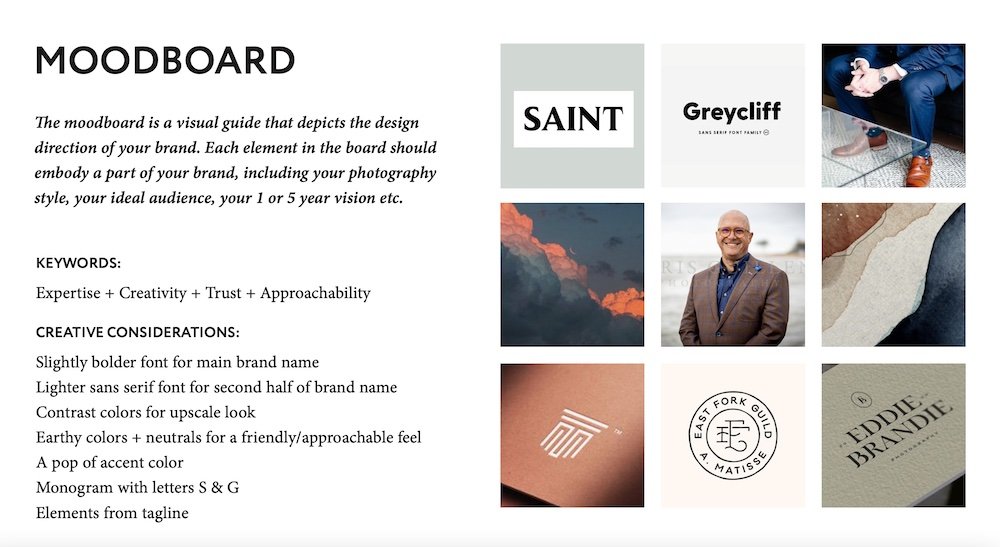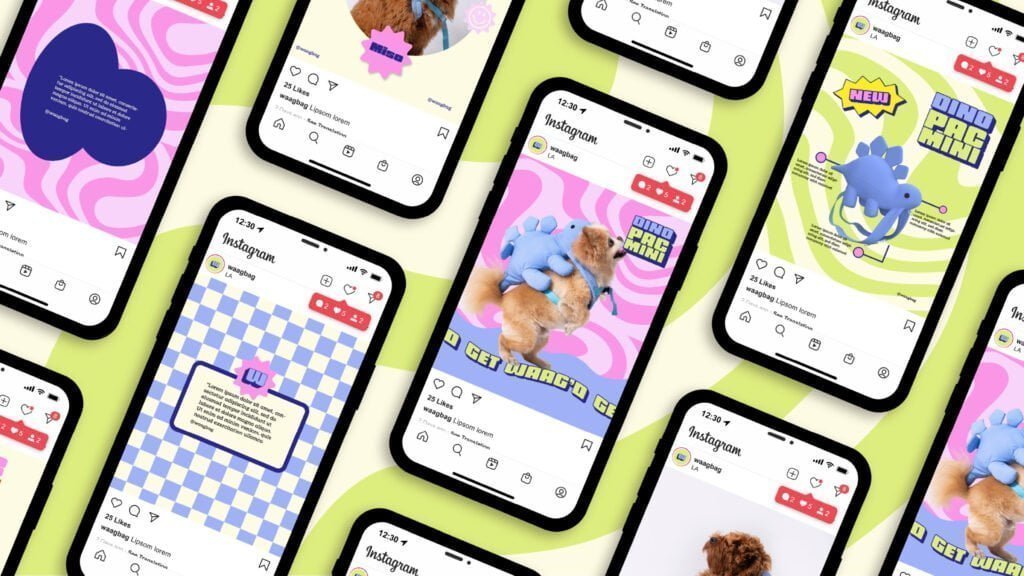Picture this: you’re walking through a department store, scanning the shelves for a new pair of shoes. Suddenly, your eyes lock onto a Nike sneaker’s sleek, minimalist design.
You recognize it immediately – without seeing the brand name – because of its signature swoosh logo and bold red and white colour scheme. That’s the power of creative direction.
At its core, creative direction is about shaping how people experience your brand, and it’s about setting guidelines for everything from visual design to messaging to product development.
Whether you’re a small startup or an established corporation, having a clear creative direction can help differentiate your brand from competitors, increase recognition among consumers, and ultimately drive sales. In this article, we’ll dive into what creative direction is and why it’s essential for any brand looking to stand out in today’s crowded market.
Request a Quote For Branding Services
The Power of a Creative Visionary: What is Creative Direction?
At its core, creative direction is guiding and overseeing a brand’s creative output, and it’s about developing a consistent tent message that resonates with your target audience.
The role of a creative director is critical to making this happen. This person is responsible for setting the creative vision for the brand, establishing guidelines for visual aesthetics, and ensuring that all communication efforts align with the overall brand identity.
A skilled and experienced creative director will work closely with other team members, including designers and copywriters, to develop an overarching concept that can be applied across different mediums such as advertising campaigns, social media content, website design, packaging design etc. The ultimate goal is to create a unified experience that connects emotionally with consumers while also reflecting your brand’s unique values and personality. Understanding your target audience is one of the most critical aspects of developing a thriving creative direction.
This requires deep insights into their preferences, behaviours and motivations to crafting messaging and visuals that resonate deeply with them. A thorough competitive analysis should also be conducted to understand where you stand with competitors regarding visual identity, tone of voice etc. All these factors play an essential role in creating a unique story around your brand that differentiates you in your marketplace while resonating deeply with your consumers.
Related: Creating User-Centric Products: A Guide to Design Research

Why Does Your Brand Need Creative Direction?
Your brand is more than just a logo or slogan, it’s an identity that speaks to your customers and sets you apart from competitors. That’s why the creative direction is so crucial.
It defines your brand and sets it apart from others in the market. A well-defined creative direction can create unique visual and verbal language that resonates with your target audience.
One of the most significant benefits of having a clear creative direction is that it helps differentiate your brand from competitors. Standing out in today’s crowded marketplace is more challenging than ever, but having a unique and consistent visual language can help you cut through the noise.
If executed correctly, it can help establish a distinct personality for your brand that resonates with consumers and makes you memorable. Another advantage of a well-defined creative direction is improved brand consistency and recognition.
When all elements of your branding – such as colour palettes, fonts, imagery, and tone of voice – align, customers can easily recognize and identify your brand wherever they encounter it- be it on social media ads or billboards along highways. This consistency builds trust among customers who look for reliability in brands they choose to invest in long-term relationships with.
Related: How Color Psychology Shapes Marketing and Branding Strategies
The Key Components of Creative Direction
Your brand’s creative direction encompasses all aspects of design and messaging that represent your brand. The visual branding elements are the cornerstone of a solid, innovative approach, including your logo, typography, and colour palette.
Your logo is often the first thing customers see when they come into contact with your brand, so ensuring it accurately represents what your business stands for is essential. Typography is equally crucial because it helps create a consistent look and feel across all marketing materials.
The colour palette is vital in creating a consistent visual identity across all channels. But visual branding elements are only part of the equation.
Strong messaging and tone are also crucial components of creative direction. Every brand needs a voice that resonates with its target audience, so establishing a tone that accurately reflects this voice is essential in developing a solid creative direction.

Visual Branding Elements: Logo, Typography & Color Palette
When you think about some of the most successful companies in the world – Nike, Apple, Coca-Cola – what comes to mind? Their logos! Compelling logos create instant recognition among consumers and provide an easy way for them to remember your brand.
It’s essential to remember that logos should be simple and memorable so they can be easily distinguished from competitors. Typography plays another vital role in developing a cohesive visual identity for your brand.
Choose fonts carefully since they communicate messages differently than other branding elements by providing context or emphasis on specific aspects like headlines versus body copy. Colour palettes are also crucial because colour psychology triggers different emotions from people who engage with these materials visually; hence colour selection should be strategic based on your product/brand values.
Related: Enhance Your Client Onboarding with Our Innovative Brand Designer Welcome Guide Template
Messaging & Tone
Your messaging should remain cohesive throughout every touchpoint where you interact with customers so that they can easily recognize how you speak about yourself; this is why tone is significant. The style of your brand voice is the emotional layering of your communication, which adds depth to the message you’re trying to deliver. It’s vital to remain consistent in your brand’s tone and messaging because it establishes customer trust and familiarity.
Other Elements: Photography, Graphic Design & Aesthetic
Other elements contributing to creating a solid creative direction include photography style, graphic design, and overall aesthetic. Photography style is essential when creating compelling imagery that aligns with your brand values since images communicate non-verbally what words sometimes cannot convey. Graphic design should also be consistent across all marketing materials since consistently presented materials demonstrate an attention to detail that extends beyond their marketing efforts and shows why their product/service is reliable.
The overall aesthetic of all these visual elements above determines how they work together in presenting your brand, making a lasting impression on consumers’ minds about what you stand for. Aesthetics play into how people perceive the value of the product/service or whether they even notice it at all – so make sure everything aligns perfectly!
Related: Designing a Greener Future: Sustainable Practices for Graphic Designers

Examples of Successful Creative Direction
Successful creative direction is a result of a well-planned strategy that is consistent across all branding touchpoints. To help you understand what that looks like in practice, let’s examine some examples of brands that have effectively implemented their creative direction.
Showcase Brands that have Effectively Implemented their Creative Direction
One brand that immediately comes to mind when we think about successful creative direction is Coca-Cola. The company’s classic red and white colour palette, cursive font, and iconic bottle shape are all instantly recognizable worldwide. The messaging behind their campaigns has always focused on happiness, sharing moments with loved ones, and nostalgia for simpler times.
This messaging aligns perfectly with the brand’s identity as a beloved soda company that has been around for over 100 years. Another brand with an impressive track record when it comes to creative direction is Nike.
From its “Just Do It” slogan to its iconic swoosh logo, the company has created a strong visual identity that resonates with athletes and fitness enthusiasts worldwide. Their campaigns often feature famous athletes like Michael Jordan or Serena Williams, showing how they embody the brand’s spirit – pushing themselves to achieve greatness no matter what obstacles stand in their way.
Analyze How Their Visual Branding and Messaging Align with Their Overall Brand Identity
What stands out most about these brands’ creative direction strategies is how well they align with their brand identity. Coca-Cola’s messaging around happiness and nostalgia captures the essence of what makes them so beloved by consumers worldwide. Nike’s focus on pushing boundaries aligns perfectly with its audience – athletes constantly striving for tremendous success in their sport or fitness regimen.
Both brands also have easily recognizable visual branding elements that tie into this messaging – from Coca-Cola’s red and white colour scheme to Nike’s iconic swoosh logo. These graphic elements are consistent across all branding touchpoints, from billboards to social media ads, and help build brand recognition and consumer loyalty.
Related: Brand Designer vs Brand Strategist Which Career Is Best
How to Develop Your Brand’s Creative Direction
Where to Start: Tips for Developing Your Creative Direction
Developing a creative direction for your brand can seem daunting, but it doesn’t have to be. The first step is identifying what makes your brand unique and what message you want to convey.
This means profoundly diving into your brand’s values, mission, and target audience. Once you understand these factors, you can start brainstorming visual branding elements such as logo design, colour scheme, and typography that best represent your brand.
It’s also important to consider the tone of voice and messaging that align with your brand’s personality. Are you playful and irreverent?
Our professional and authoritative? Consistency in messaging across all channels is critical, so take the time to develop messaging guidelines that will keep your content on-brand.

Hiring Outside Help: Advice on Working with a Team
If the idea of developing a creative direction on your own seems overwhelming or you lack in-house design expertise, consider hiring outside help. A professional designer or creative agency can bring fresh ideas and experience to the table that can give your brand the extra edge it needs. However, before hiring anyone, you must communicate what you’re looking for in terms of creative direction so they fully understand what makes your brand unique.
Prepare an extensive brief outlining any existing branding elements or campaigns for their reference. Working with a team also means being open-minded about feedback from others who may have different perspectives than yours.
Request a Quote For Branding Services
Collaboration is essential here; ensure everyone involved has frequent check-ins throughout development phases to align all parties with the vision. With some planning – whether internal or external hire – developing a solid creative direction is possible no matter how small or large your company is.
A clear creative direction for your brand is essential to its success. A carefully curated, innovative approach can help you stand out in a crowded market, create a strong brand identity, and improve overall brand recognition. Without it, your brand risks being overlooked or forgotten in a sea of competitors.
So why take that risk? By investing the time and resources into developing your creative direction, you can differentiate your brand and ensure consistency across all touchpoints.
This helps build customer trust and establishes a sense of reliability that can ultimately lead to increased sales and loyal customers. As we’ve explowe’ven this article, developing a creative direction for your brand requires careful consideration of visual branding elements like logo, typography, colour palette, messaging, and tone of voice.
It’s importIt’sto think critically about how these elements align with your overall brand identity and mission. Ultimately, having a clear creative direction is an investment in the future success of your business.
By developing it now, you’re setting yourself up for long-term growth and recognition within your industry. So don’t wait for don’t explore your unique creative direction today!




